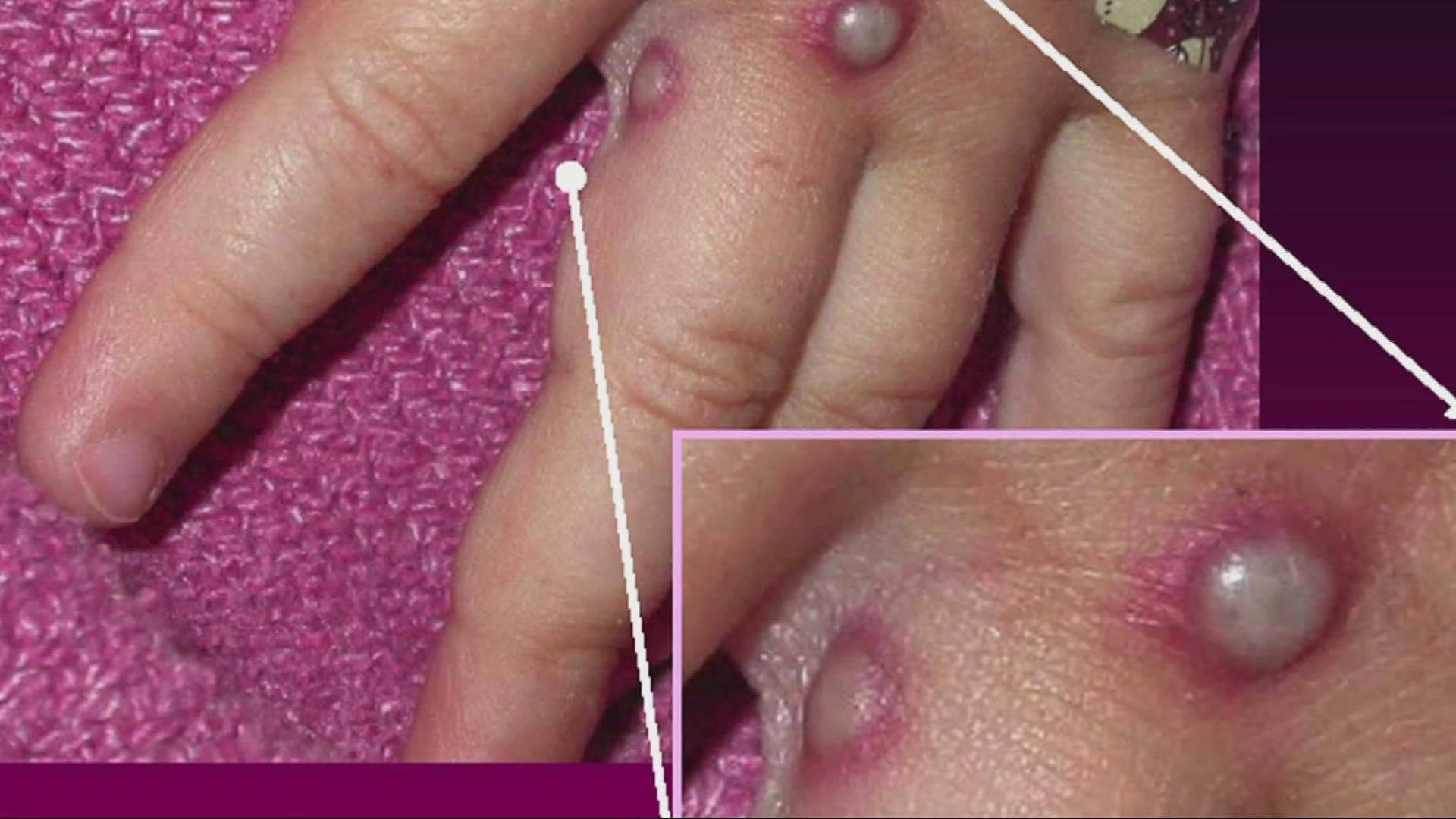COLUMBUS, Ohio — Monkeypox has officially made its way to Ohio.
State Health Director Dr. Bruce Vanderhoff confirmed Monday officials have identified a "probable" case of the virus in an adult male resident. He added this was based on "preliminary testing" from the ODH labs, with official national tests still pending.
Vanderoff, who has been one of the faces of Ohio's response to the COVID-19 pandemic, sought quickly to differentiate Monkeypox from the coronavirus. He stressed that Monkeypox "does not spread easily between people," meaning the overall risk to Ohioans "is very low."
"This disease is not like COVID-19, " Vanderhoff declared. "Monkeypox spreads between people primarily through direct contact with infectious sores, scabs, or body fluids."
The most common symptoms of monkeypox include fever, body aches, chills, and fatigue, with more serious ailments including rashes and lesions on the face and hands that can spread throughout the body. It is believed to be more of a risk to children, but no deaths have been reported at this time among the roughly 1,500 cases around the world, and most patients recover within about two to four weeks.
Vanderhoff adds monkeypox can be less commonly spread through respiratory secretions stemming "prolonged" face-to-face contact. He advised anyone who is experiencing an "unexplained rash" or lesions to contact local health authorities as soon as possible.
"While we do have a probable case of monkeypox here in Ohio, it's important to note that because the disease is not easily transmitted, there is very little risk to the general public," he added.
Dr. Amy Edwards, pediatric infectious disease expert from University Hospitals, agreed.
"For the vast majority of the population this is not going to be a thing," she said, adding that even if the spread becomes more than what health experts are anticipating, the U.S. has stockpiles of smallpox vaccine, which has been proven to be protective against monkeypox.
Edwards said one of the biggest takeaways from the monkeypox outbreak is the important work of scientists and doctors in the field of public health.
"They work tirelessly day and night to prevent the spread of infection in our population here in Ohio," said Edwards.
"If Covid and monkeypox and all of the things in the last two years have taught us, is that that work is incredibly important," she said.

